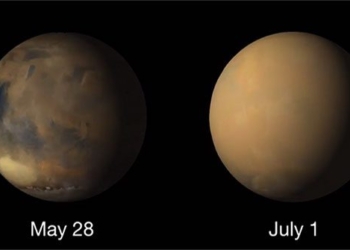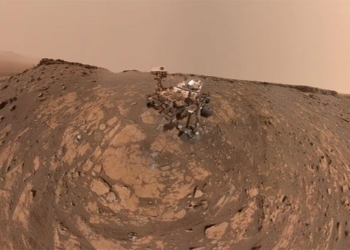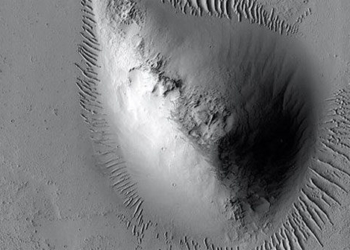Recent research has shown that water plays a crucial role in shaping the geology of Mars.
According to Space, the Mars Express orbiter from the European Space Agency (ESA) has recently captured new images revealing the complex geological surface of the Red Planet.
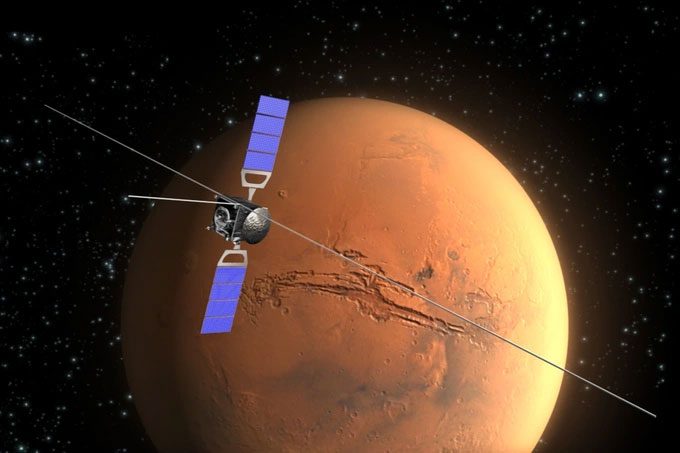
The Mars Express continues to provide new insights into the Martian surface after nearly 20 years of operation. (Image: ESA).
Specifically, the images show several deep fissures on the surface of Mars and valley topography near a vast volcanic plateau known as Thaumasia Planum.
These structures were likely formed by water flowing down the slopes, potentially providing scientists with clues about Mars’ ancient past.
The surface features in this area also appear to be quite diverse, ESA notes. Specifically, they include mountain peaks rising up to 4,500 meters above the lowest areas of the plateau.
Thaumasia Planum is believed to have formed during the early days of Mars, around 4 billion years ago. Most of the structures here were created by massive lava flows covering the surface, primarily consisting of volcanic ash and dust.
Following this process, tectonic activity and flowing water began to occur more frequently, creating the geological features we observe today, ESA remarked in a statement.
“It was a chaotic time, with many prominent geological features of Mars just beginning to form,” ESA officials stated.

Images of Mars’ surface taken by the ESA’s Mars Express orbiter show lower surface areas in shades of blue and purple, while higher regions appear white and red. (Image: ESA).
Active tectonic activity will also have significant effects within the planet’s crust, leading to deep cracks on the surface, known as Nectaris Fossae.
These fissures stretch across much of the photographed area and are likely closely related to the largest canyon system in the Solar System, Valles Marineris, located to the north of the Thaumasia Planum plateau.
The images also reveal several deep troughs referred to by scientists as Protva Valles. According to ESA, these were formed through geological tectonic processes, with water having flowed across the surface of Mars for about 3.8 billion years, carving into the rock over a long period.
However, the origin of these flows has not yet been clearly determined. There is a hypothesis suggesting that they seem to originate from varying elevations, allowing water to seep through multiple layers beneath the Martian surface.
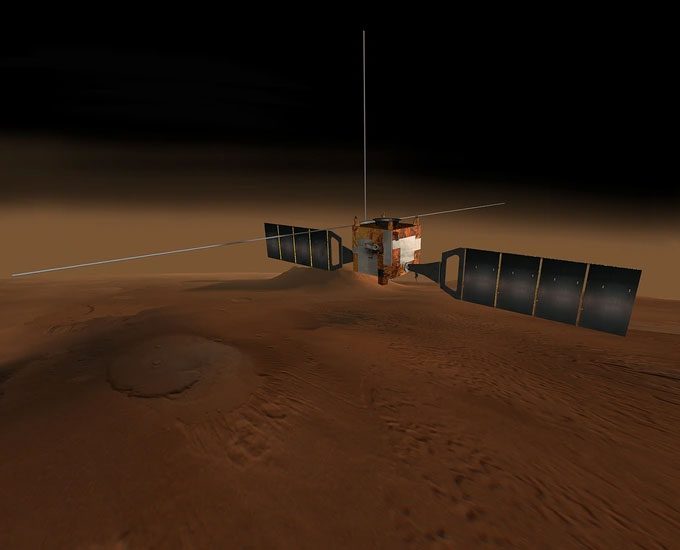
Graphic depicting the design of the Mars Express spacecraft. (Image: ESA).
Mars Express is a space exploration mission launched by the European Space Agency (ESA) in 2003, serving as the agency’s first planetary mission.
Mars Express consists of two components: the Mars Express Orbiter and the Beagle 2 lander, primarily designed to conduct research on astrobiology and geochemistry.
Despite the lander failing to land as expected, the orbiter has successfully completed its scientific missions since early 2004, including capturing high-resolution images and mapping surface minerals, as well as analyzing the sounds of the Martian surface structures.
After nearly two decades of exploring the surface of the Red Planet, the information collected by the Mars Express Orbiter has enabled ESA scientists to accurately determine the circulation and composition of the Martian atmosphere, contributing to the study of the interaction between the Martian atmosphere and interplanetary environments.








































